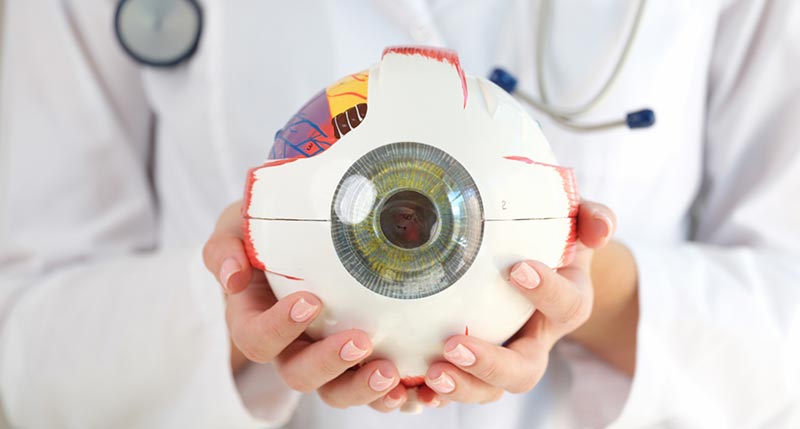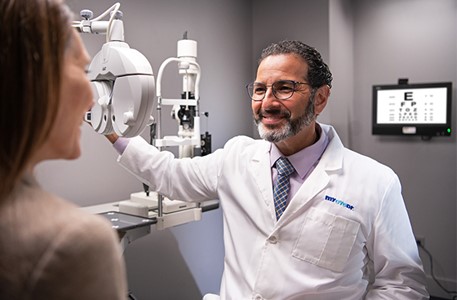Specialist Eye Doctor in Riverside: Your Vision is Our Top priority
Specialist Eye Doctor in Riverside: Your Vision is Our Top priority
Blog Article
The Comprehensive Eye Exam: What to Expect Throughout Your Visit to the Eye Physician
A see to the eye physician for a comprehensive eye test is even more than a regular check-up; it is a crucial step in safeguarding your aesthetic wellness. What exactly happens throughout the eye health evaluation, and just how does it influence the prescription process?
Initial Consultation
The first examination during an eye test works as a vital structure for understanding a client's visual health requirements. This stage establishes the tone for the entire examination process, enabling the optometrist to collect necessary info concerning the patient's clinical background, way of living, and details vision worries. By diligently assessing any pre-existing conditions, drugs, or previous surgical treatments, the eye treatment professional can tailor the examination to address private requirements effectively.

Moreover, the first assessment is a chance for patients to voice any kind of inquiries or worries, fostering a collaborative partnership with their medical care provider. This interaction not just makes certain that the person feels informed and comfy however additionally encourages them to get involved actively in their eye wellness administration. Collectively, these conversations enable the optometrist to devise a personalized evaluation plan, ensuring ideal care and precise medical diagnosis.
Visual Skill Examination
Kicking off the core elements of an eye assessment, the aesthetic acuity test is created to analyze the intensity and clearness of a client's vision. This essential examination assists identify how well an individual can recognize letters or icons at a standardized range, typically making use of a Snellen graph (Optometrist Riverside). The graph consists of rows of letters that reduce in size inside out, with the patient placed at a customary distance of 20 feet
Throughout the test, the client is asked to cover one eye and check out aloud the smallest line of letters they can see plainly. This process is repeated for the various other eye. The outcomes are taped as a fraction, with 20/20 vision suggesting typical aesthetic acuity-- where the individual can see at 20 feet what a person with typical vision can see at that distance.
The aesthetic skill examination also recognizes potential refractive errors such as nearsightedness, hyperopia, or astigmatism, which might require rehabilitative lenses. By developing a standard of aesthetic performance, the examination is an essential analysis tool that aids the eye treatment professional in creating a proper treatment plan customized to the person's distinct visual needs.
Eye Wellness Analysis
Following the aesthetic skill test, an extensive eye health and wellness assessment is conducted to make certain the general well-being of the eyes. This vital section of the eye examination involves a comprehensive analysis of both the internal and external frameworks of the eye.
With the use of ophthalmoscopy or fundus photography, the retina, optic nerve, and blood vessels are carefully examined. In many cases, student extension is done to boost visibility of the inner eye structures, although this may result in short-term light sensitivity for the person.
Furthermore, intraocular pressure is determined to screen for glaucoma risk. This is typically done utilizing tonometry, which can discover raised stress degrees that may suggest possible damages to the optic nerve. Collectively, these analyses form a comprehensive evaluation to maintain ocular wellness.
Refraction and Prescription
Refraction is an innovative procedure carried out by eye treatment experts to establish the specific lens power needed to deal with refractive errors such as nearsightedness, hyperopia, astigmatism, and presbyopia. The goal of this treatment is to examine just how light bends as it passes through the eye, permitting the specialist to figure out whether rehabilitative lenses are essential for enhanced aesthetic skill.
During the refraction procedure, the individual is asked to look through a phoropter, a tool that has various lenses. The expert will methodically alter these lenses and ask the patient to contrast quality in between alternatives up until the most effective feasible vision is accomplished. This procedure is crucial in crafting an accurate prescription that defines the appropriate lens power for spectacles or call lenses.
The prescription originated visit this site from this treatment not just maximizes vision however additionally serves as a structure for picking suitable rehabilitative glasses. It is important to make sure that prescriptions are on a regular basis updated, as adjustments in vision can happen gradually, emphasizing the value of routine eye assessments. This precise interest to information aids maintain clear, comfortable vision in day-to-day live.
Follow-Up Referrals

During a follow-up visit, the eye medical professional will carry out a collection of tests to review visual acuity and check for any changes in vision that could require an update to the prescription. Additionally, the follow-up gives a possibility to talk about any type of discomfort or issues experienced with current eyeglasses. Modifications can be made to guarantee comfort and efficiency, whether with lens alteration or structure adjustments.
For patients with recurring conditions such as glaucoma, diabetes-related eye issues, or macular degeneration, more constant follow-ups may be find here needed. These visits are essential for taking care of and potentially slowing the development of eye illness. Sticking to these recommendations can substantially add to preserving visual health and wellness and stopping lasting difficulties.
Final Thought
The comprehensive eye exam is an important procedure for keeping visual health, incorporating a detailed evaluation of clinical background and vision problems. Secret parts include the visual skill examination, which assesses sight clarity, and the eye health analysis, which checks out the overall condition of the eyes.
A visit to the eye medical professional for a comprehensive eye exam is more than a regular examination; it is a vital action in securing your visual health and wellness.Kicking off the core parts of an eye exam, the aesthetic acuity examination is designed to evaluate the sharpness and clearness of a patient's vision.Complying with the visual skill examination, a detailed eye health evaluation is conducted to ensure the total health of the visit the website eyes. These sees allow the eye treatment professional to keep track of changes in vision, update prescriptions, and examine the overall health of the eyes. Key parts consist of the visual skill examination, which assesses eyesight clarity, and the eye health and wellness assessment, which examines the overall problem of the eyes.
Report this page